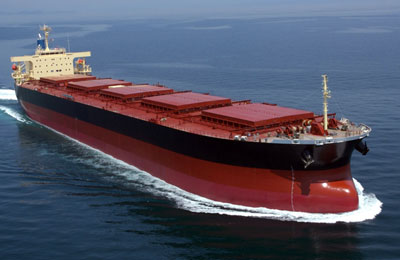
Saudi oil price cut to Asia linked to market share
Sydney, February 6, 2013
By Clyde Russell
Saudi Arabia's decision to cut oil prices to Asia for March cargoes by more than expected shows that the kingdom is keen to keep market share and that the region's demand is easing after winter.
By themselves, neither of these factors are a big surprise, but what was unexpected was the extent of the cut in Saudi Aramco's official selling price (OSP).
The world's largest oil exporter cut the OSP on its benchmark Arab Light grade to Asia to $1.95 a barrel above Oman/Dubai, down a sharp $1.50 from February's $3.45 premium.
Traders surveyed by Reuters ahead of the February 5 announcement had expected a cut of $1 a barrel in the OSP, meaning the Saudis delivered a 50 percent bigger reduction than estimated.
This took the premium to the lowest since October last year, and was also the biggest cut since February last year.
This means for the second year in a row, a large increase in the OSP at the start of the year has been followed by an equally large drop.
In common with February last year, Asian refiners had felt the increase in the OSP for February 2013 cargoes had been overdone and wasn't justified by market fundamentals.
This was especially the case since at the same time the Saudis were raising costs for Asian refiners, they were cutting them for European clients.
But this has been reversed for March cargoes, with Asian refiners getting a cut and OSPs rising for Northwest Europe, with the discount for Arab Light falling to $1 a barrel under the Brent weighted average from February's $1.30 discount.
One reason the Saudis may have chosen to cut the OSP for Asian customers, while raising it for Europe is that the Brent-Dubai exchange for swaps narrowed dramatically in January, before widening again at the end of the month.
The Saudis are believed to try and keep prices to refiners across the regions at more or less the same levels, so a widening spread between Brent and Dubai implies Asia should get an OSP cut and Europe an increase.
Conversely, a narrowing premium for Brent over Dubai implies an OSP hike for Asia and a cut for Europe.
The spread started January at $5.13 a barrel, sunk to $4.28 by Jan. 17 and then widened to end the month at $5. This means that the spread, despite the dip in the middle of the month, remained elevated compared to the range between $3 and $4.72 that prevailed from September to November last year.
At that time Saudi OSPs for Asia were also lower, with Arab Light at a premium of just $1.25 a barrel last September.
What the Brent-Dubai spread shows is that the OSPs to Asia have room to be further reduced in the next few months, especially if demand for crude is subdued.
DEMAND TO EASE
It's likely that Asian refiners will be buying less oil in the next few months as the maintenance season in North Asia gets underway and there is the seasonal lull between winter and summer.
The backwardation between the first and second months in Dubai futures has been on a flattening trend since its most recent peak at the end of October, although the sharp dip at the end of last month looks like a blip.
The spread is currently 40 cents a barrel, down from the $1.09 a barrel on Oct. 31, 2012, but also up from its drop to a low of just 3 cents on January 30.
It went from 27 cents on January 28 to 4 cents of January 29, 3 cents on January 30, up to 10 cents on January 31 and to 38 cents on February 1, and it appears a block of large trades was behind the rapid, large moves.
Nonetheless, the recent trend toward a narrowing backwardation remains intact, signalling the market is no longer prepared to pay a high premium for prompt cargoes.
This would support a further reduction in Saudi OSPs to Asia in the next few months, at least until demand picks up around the middle of the year for the summer peak.
There does appear to be a recent seasonality in Saudi OSPs to Asia, with them falling in the first and third quarters and rising in the second and fourth.
However, it's somewhat surprising that the Saudis have twice confounded the market by raising premiums early in the first quarter, only to cut them by more than expected the next month.
When they cut the OSP by more than $2 for February 2012 cargoes, I wrote that the Saudis were reversing an increase in prior months that had been unrealistically high.
This time the cut in OSPs also reflects that they had been too high for the market conditions, but not to the same extent as last year. - Reuters
* Clyde Russell is a Reuters market analyst. The views expressed are his own







